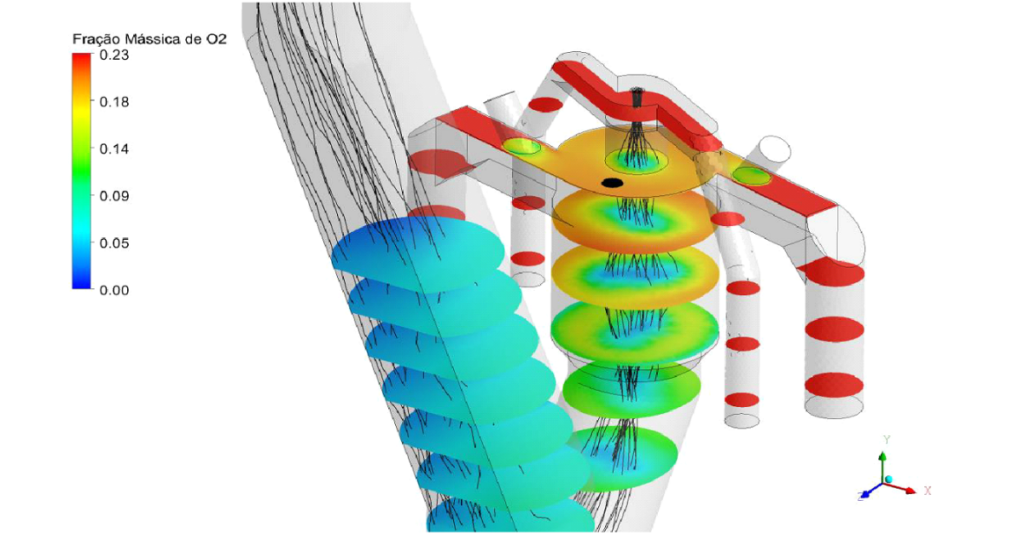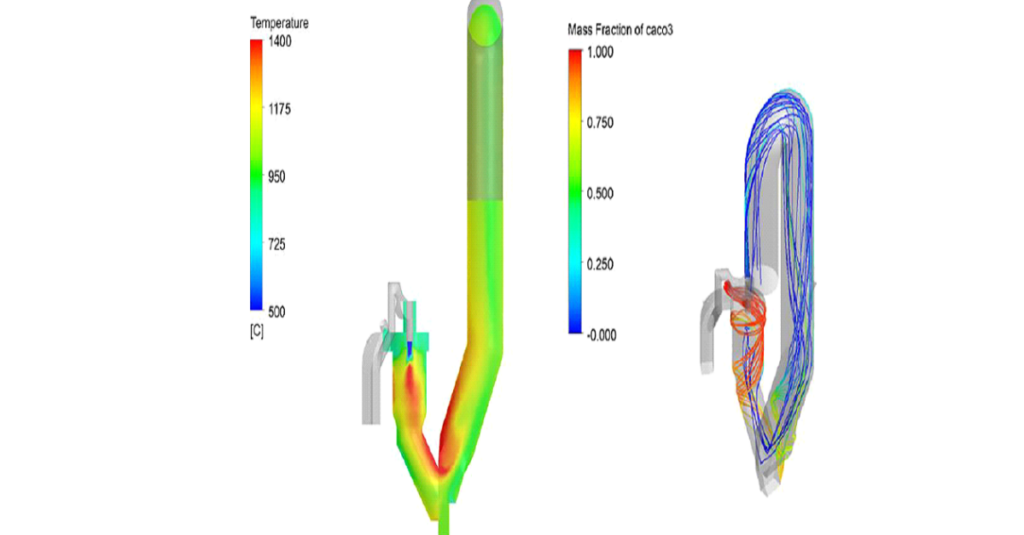Understand how calciner modeling simulation can be key to improving your combustion process!
Dynamis works with CFD simulation tools (Computational Fluid Dynamics) aiming to predict the behavior of different processes, in order to better understand the thermal phenomena that relate to each application.
The modeling of calciners is a major application of CFD simulations, where different combustion chamber designs and geometries are simulated, or the best burner installation points to ensure the best combustion solution for your process. additionally verifying other points of improvement, such as the alternative fuel injection method, integrating with the other operating parameters, or even the reduction of NOx emission.
These simulations allow Dynamis’ engineers and project designers, along the kiln’s operation technical staff, obtain data such as the raw meal and fuels’ flow, flame’s shape, pressure, temperature, and gases’ velocity etc., which are fundamental to understand the process.


Initially, a simulation is conducted with the current operational conditions in our client’s equipment, in the so-called base case. This lets us validate the results obtained by comparing them with the data collected during the field study. For a better overall understanding of the process, a mass and energy balance is also done.
It is important to emphasize that the field study is carried out by a well experienced professional, for the correct field measurements, who will look for several process variables, as well as in different operational conditions to obtain a greater sensitivity of the impact of these variables on the kiln’s main operational parameters (production, thermal consumption, gases and material’s temperature profile, etc.).
Then, different cases are simulated, altering the chamber’s geometry, positionings for the secondary burner, etc., and so selecting the most suitable solution for our client’s necessities.
In one of its studies, Dynamis provided 2 D-CBURNERS secondary burners. To get the best results, a CFD model of the client’s calciner was made and the combustion, calcination and heat transfer were studied, aiming to mainly calculate the NOX emission’s reduction provided by the utilization of the D-CBURNERS. In the model studied by Dynamis, directed to the no formation of “hot spots”, the NOX emission’s reduction was successfully obtained due to the new position and new technology of Dynamis’ secondary burners.



After analyzing different geometries and positions for the new burners, Dynamis obtained a new configuration that allowed a 15% reduction in NOx emission and providing a reduction in ammonia consumption expenses equivalent to US$ 173,000.00 per year.
After the implementation of the Dynamis burner in 2019, it was possible to prove the results obtained in the CFD studies, with a NOx reduction greater than the 15% obtained in the study, with values above 25%, according to the customer’s own measurements.

Dynamis presents a wide range of CFD projects, with more than 100 studies for the most diverse cases, always ensuring the highest quality work for your project. Visit our website at dynamis-br.com to learn more.
Team Dynamis

